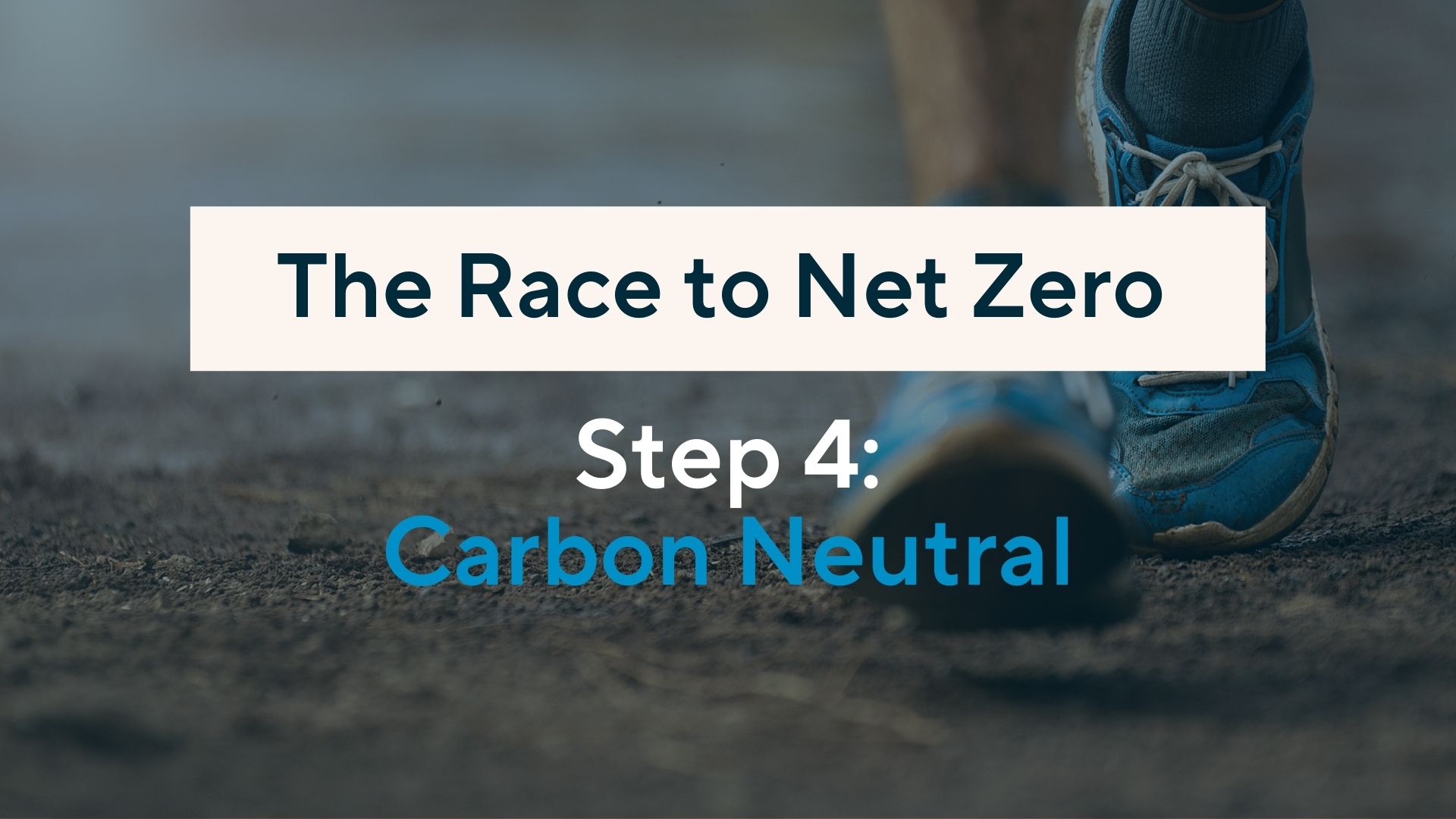If you were running a marathon, you would need plenty of time to prepare. The same applies for the Race to Net Zero. Embarking on the journey to achieve Net Zero Carbon for your organisation is going to need a full race training programme. That’s why over the next 6 weeks we will provide a step-by-step guide on how to get ahead and achieve your climate targets.
What is Carbon Neutral?
Over the past two decades, ‘Carbon Neutral’ has become a major buzzword, especially as the race to Net Zero has steadily accelerated.
When you have achieved Carbon Neutral, your Green House Gas (GHG) emissions from within your organisation are balanced by offsetting an equal amount of carbon from the atmosphere. To reach Carbon Neutral, you will need to evaluate your company’s emissions in Scopes 1 and 2 through carefully collecting and measuring your carbon footprint.
Neutral vs Net Zero
Carbon Neutral and Net Zero Carbon often get used interchangeably which can cause much confusion in the market. It is important to understand that the two are significantly different stages in your race.
Why does this confusion exist? Carbon Neutral and Net Zero Carbon both involve reducing and balancing your carbon footprint. The key difference is that Carbon Neutral includes Scopes 1 and 2, and Net Zero Carbon includes Scope 3. Carbon Neutral therefore is a relatively easy target to achieve for many organisations as it includes all emissions within their control. This can be completed and verified within a year of measuring your carbon for example, whereas Net Zero Carbon is a much longer-term objective due to Scope 3 being outside of the company’s direct control.
Another important defining distinction is ‘Net Zero’ is still yet to be universally defined and only recently the SBTi Net Zero Standard has been published to try and tackle this challenge. Whereas PAS 2060 is a universally recognised standard for Carbon Neutral. Established by the British Standards Institute, they provide a recognised method of substantiating claims of Carbon Neutrality to ensure efforts are genuine and credible. The PAS 2060 standard includes a four-stage process that includes assessment, reduction, offsetting, documentation and verification.
Reduce First
As mentioned in Step 2: Carbon Reduced you must first reduce all possible emissions within your Scopes 1 and 2 before you can start to qualify for a Carbon Neutral status. Keep in mind that Carbon Neutral is not an immediate option for every company. The complexity of your organisation may require a comprehensive strategy to understand which reductions are feasible over the coming years and to determine the anticipated annual budget for carbon credits. Moreover, many companies will require support establishing the data collection and management strategies to attain a feasible plan to reach Carbon Neutral, and ultimately, Net Zero Carbon. Once you have implemented effective carbon reduction initiatives within your organisation, you can start to consider which course of action you will pursue to become Carbon Neutral.
Carbon Credits: Avoidance
You can purchase credits from various projects to compensate for your GHG emissions. These are known as ‘carbon credits’, where you pay according to the tonnes of carbon that will reduce emissions from the atmosphere. To achieve Carbon Neutral, you can invest in avoidance offsets where there are a range of projects to consider. Avoidance offsets are initiatives that curb emissions by enhancing processes against a business-as-usual scenario. These involve projects such as large-scale renewable energy projects, protecting land from deforestation or initiatives such as switching to fuels for stoves in developing countries.
Avoidance projects are a popular offsetting option because they are generally a cheap avenue to achieving Carbon Neutral. However, ensure that you partake in legitimate and well executed offsetting projects, as low-quality credits and offsetting projects can inhibit your progress and ability to succeed in later stages of the race. To make sure your offset projects are accurately and credibly purchased they need to meet these conditions:
1. Real – GHG offsets must represent one ton of CO2e greenhouse gas emissions reduced or sequestered as a result of an activity undertaken for the purpose of reducing emissions
2. Permanent – Emission reductions or removals are permanent if they are not reversible; that is, the emissions can’t be rereleased into the atmosphere
3. Additional – In order to generate offsets, a project must be a response to the incentives provided by a carbon offset market. Activities that would have happened without such incentives are business-as-usual and do not represent new emission reductions.
4. Verifiable – Credible offset programmes require that emission reductions be monitored and regularly verified by an independent, qualified third party
5. Quantifiable – Emission reductions must be reliably measured and easily quantified following a consistent and transparent methodology
6. Enforceable – One credit can only credibly offset one ton of CO2e emissions; as a result, it must be tracked and it must be possible to enforce its ownership and use in order to avoid double counting. This is usually done via a registry.
This criteria also needs to be considered for removal offsetting schemes. Removal schemes absorb emissions from the atmosphere either by nature-based or technology-based initiatives. When thinking about your full race to Net Zero, you need to factor in both types of offsetting schemes equally in order for you to cross the finish line. Avoidance offsets are available to reach Carbon Neutral, and removal offsets are introduced when reaching the final target of Net Zero, which we cover in our next article, Step 5: Net Zero Carbon.
The Next Steps
Athletes training for a marathon seek out the best coaches they can find. When you’re looking for external support in pursuing an offsetting scheme to become Carbon Neutral, you want the best consultants who will create a tailored strategy that meets your needs and expectations.
Attaining Carbon Neutrality will propel you to the next stage of the race: Net Zero Carbon. Our upcoming article provides you with key insights on reaching Net Zero Carbon.





